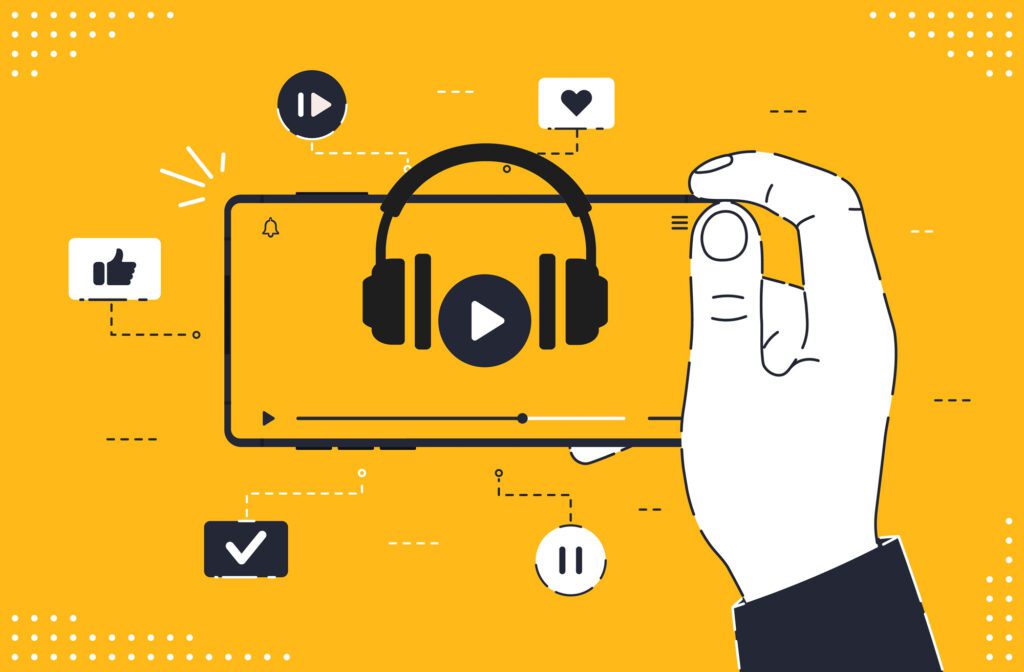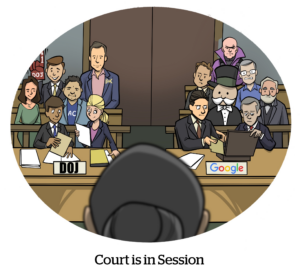Podcast listeners bear a striking resemblance to CTV audiences.
The majority (62%) of weekly podcast listeners regularly stream ad-supported content, according to research from Acast, a podcast monetization and distribution platform.
The overlap makes sense, said Elli Dimitroulakos, Acast’s global head of ad innovation.
Podcasts are like the next phase of radio, connected TV is an evolution of television, and the people who consume both are typically more educated, have higher income and tend to live in dual-income households, Dimitroulakos said.
“They’re also demanding, and they know what they like,” she said, “as in, they’re picky about the content they consume.”
Playing by ear
The challenge is reaching these demanding and picky audiences with targeted media, said Tomas Rodriguez, director of audio inventory partnerships at The Trade Desk.
“Addressability is relatively easy when you have cookies and mobile device IDs that get classified into third-party audience segments – but as you start moving into podcasting and CTV, you don’t have those same tools in your toolbox,” said Rodriguez, who switched to his audio-focused role last November after three years as TTD’s director of CTV inventory and partnerships.
If someone is watching a Vizio TV in an office, say, or a bar or gym, the bid request for an ad will come with a Vizio device ID attached. “But you’re not going to find that device ID in many first- or third-party segments,” Rodriguez said. “So, you need something in the middle to connect the audiences.”
Fact is, a large amount of podcast inventory isn’t tied to identifiers, which is because of the RSS feed nature of most podcast consumption.
Exclusive partnerships like the one Spotify struck with Joe Rogan aside, when someone streams a podcast on Spotify or listens via Apple’s podcast app (which comes with its own measurement challenges), the app has to rely on an RSS feed to pull the content.
“In that process, there’s signal loss,” Rodriguez said, “and addressability becomes difficult.”
But most marketers “don’t fully appreciate” that when it comes to targeting and measurement, digital audio is a completely different animal than channels like search and social, said Robert Hunt, senior director of audio at Hearts & Science.
Since “more than half of podcast consumption takes place in Apple Podcasts, the data limitations that programmatic buyers are starting to face are challenges audio has always faced,” Hunt said.
For instance, all podcast attribution is based on IP address and the mobile user agent of an episode stream or download.
To manage the measurement challenge, Hearts & Science works with partners, including ArtsAI, Claritas and Podsights to get more real-time insights into audio campaigns.
For its part, The Trade Desk is taking a page from its CTV playbook. Legacy cross-device solutions do a decent job of connecting the dots on CTV, and The Trade Desk has started applying a similar approach to podcasts. The Trade Desk is also investing heavily in addressability solutions, like Unified ID 2.0.
Partnerships are also part of the solution. Back in May, at the podcast upfronts, Acast announced an integration with The Trade Desk to help advertisers target podcast listeners at the household level, just like they do for CTV, and measure the results. The approach helps with frequency management, Rodriguez said.
Homestyle
It might sound odd to talk about targeting podcast listeners at the household level, because podcast listening is often associated with people on the go – as they commute, go for a run or multitask while doing errands.
But 65% of listeners say that they’re attentive and focused when listening to podcasts, according to research from Nielsen and Acast late last year, which could be because many people treat podcast consumption as a lean-back experience.
“A lot of clients I talk to are surprised by the fact that over half of podcast listening takes place in the home,” said Hunt, whose team has grown from four to 11 over the past two years, which demonstrates growing interests from clients in emerging media, including audio.
Although from one perspective, the alignment between CTV and podcasting makes them into “competitors for the same consumption time and behavior,” Hunt said. But it’s more logical to consider them as complementary and look at how the two can work together.
For example, if an advertiser knows that a household was already exposed to an ad on a streaming platform, it might be time to “get a little more intimate and serve a podcast ad that’s sequential in nature,” Rodriguez said. Or vice versa: podcast ad first, then CTV for retargeting.
There’s also an opportunity for streaming media, whether that’s audio or video, to avoid committing the same sins as other online advertising channels. Over-targeting isn’t a good thing.
Targeting at the household level “tends to be more privacy-centric,” Acast’s Dimitroulakos said.
“Household targeting isn’t as aggressive as one-to-one,” she said, “and having an idea of what’s happening at the household level means that we can inform personalization and consider reach and frequency without being intrusive.”













